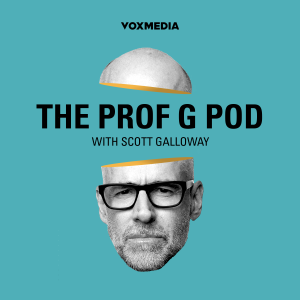

"Humble Inquiry" introduce the concept of Humble Inquiry as both a "fine art" and a "total attitude" focused on drawing others out through genuine questions to which the inquirer does not already know the answer. The core premise is that asking, rather than telling, is a powerful way to build relationships based on curiosity, interest, openness, and trust, particularly in a cultural context that often favors "do and tell." The book contrasts Humble Inquiry with other forms of inquiry (diagnostic, confrontive, process-oriented) and emphasizes the importance of self-awareness, situational awareness, and acknowledging one's own ignorance (Here-and-now Humility) as prerequisites for effective Humble Inquiry. The authors argue that Humble Inquiry is crucial for fostering psychological safety, facilitating learning, improving problem-solving, and humanizing interactions across hierarchical and social boundaries.
Key Themes and Ideas:
- Defining Humble Inquiry:
- Humble Inquiry is presented as both a skill and a mindset. It's described as "the fine art of drawing someone out, of asking questions to which you do not already know the answer, of building a relationship based on curiosity and interest in another person."
- Beyond mere questioning, it's a "total attitude that includes listening more deeply to how others respond to our inquiry, responding appropriately, and revealing more of ourselves in the relationship building process."
- Crucially, "HUMBLE INQUIRY IS A GREAT WAY TO CONNECT TO ANOTHER PERSON, TO BUILD A RELATIONSHIP."
- Asking Instead of Telling:
- The book advocates for prioritizing asking over telling, especially in situations where building relationships and gaining a deeper understanding are important.
- "To Boldly Tell or Humbly Inquire" is presented as a fundamental choice.
- "Gratuitous telling betrays three kinds of arrogance: (1) that you think you know more than the person you’re telling, (2) that your knowledge is the correct knowledge, and (3) that you have the right to structure other people’s experience for them." This highlights the potential negative impact of unsolicited telling.
- Asking, in contrast, "temporarily empower[s] the other person in the conversation and make[s] yourself vulnerable, for a time."
- Building Openness and Trust:
- A central tenet is that "HUMBLE INQUIRY IS ABOUT BUILDING OPENNESS AND TRUST."
- Relationship building is an "iterative process" that thrives on trust.
- "Humbly inquiring communicates openness, and honestly revealing builds trust." This emphasizes the interplay between the two elements.
- A conversation that builds a trusting relationship (Level 2) is an "interactive process in which each party invests and gets something of value in return."
- Relationship Levels and Humble Inquiry:
- The authors introduce a framework of relationship levels: Level –1 (Domination/exploitation), Level 1 (Transactional/professional distance), Level 2 (Personal/openness and trust), and Level 3 (Intimacy).
- Telling is most aligned with Level 1 relationships, which are based on "societal and cultural norms of etiquette, good manners, and tact."
- Humble Inquiry is an invitation to move toward a Level 2 relationship.
- While Humble Inquiry is essential for Level 2 relationships, the attitude can also be beneficial in transactional situations as an invitation to deeper connection.
- The Humble Inquiry Attitude and Situational Awareness:
- The "Humble Inquiry attitude" is described as a "mix of being helpful, building relationships, and deciphering situations."
- Developing "situational awareness" is the most important "here-and-now skill" for the learner of Humble Inquiry.
- Behavioral agility in what, how, when to ask, when to reveal, and when to display empathy is also crucial.
- The attitude of Humble Inquiry "maximizes your curiosity and interest in others and helps to minimize bias and preconceptions about them."
- Here-and-now Humility:
- This is a crucial concept defined as a "particular feeling in the here-and-now situation," distinct from humility as a personality trait.
- "Even the most narcissistic arrogant characters can feel humble in a situation that they cannot understand or control."
- Here-and-now Humility involves recognizing one's dependence on others in a given moment.
- My "Here-and-now Humility can by itself trigger a very positive and genuine curiosity and interest in you... it is precisely my temporary 'subordination' that can create psychological safety for you."
- Different Forms of Inquiry:
- The book differentiates Humble Inquiry from other types of inquiry used in helping relationships:
- Diagnostic Inquiry: "steers the client’s thought process and conversation toward areas that the helper considers to be relevant." It focuses on a particular thing the other person is saying and directs attention. Can be perceived as an interruption or takeover if not done with the right attitude.
- Confrontive Inquiry: "not only influences the direction of the conversation but adds the helper’s own ideas, concepts, or advice as part of the question." This form is rarely Humble Inquiry as the inquirer takes charge of content and process. It can arouse resistance.
- Process-Oriented Inquiry: "invites the client to examine the actual helping process itself so that both helper and client can assess whether help is being delivered or not." This form focuses on the relationship and can be a powerful way to reset difficult conversations.
- The authors emphasize that even diagnostic or confrontive questions can convey the Humble Inquiry attitude if the motive is genuinely helpful and trust is established.
- The Culture of Do and Tell:
- Modern industrial cultures often prioritize "doing" and "telling" over "asking" and "listening."
- This culture is reinforced by assumptions about individualism, competition, and the value of rapid action.
- "When a culture favors telling over asking, especially in a fast-moving uncertain business or professional context, it becomes increasingly difficult to achieve the deeper levels of relationship that are required for effective collaboration."
- Cultural Do’s and Don’ts of Conversation:
- Conversations are governed by cultural norms and rules, particularly those related to status and rank.
- "In order to understand some of the inhibitors of Humble Inquiry, we should examine particularly the rules and norms pertaining to behavior between people of different statuses."
- These rules can make it difficult for subordinates to speak up or for those in power to genuinely inquire across hierarchical boundaries.
- What Really Goes On in a Conversation (The Johari Window):
- The Johari window model (Open Self, Blind Self, Concealed Self, Unknown Self) is used to explain the complexity of communication.
- "We each enter every situation or budding relationship with a culturally informed open self that will reflect our purpose for being there."
- "in every conversation we also have a blind self, the signals we are sending without being aware that we are sending them, which nevertheless create the impression that others have of us." This highlights the importance of authenticity.
- Authenticity and sincerity are judged by the consistency of signals from the open and blind selves.
- "Gently asking about and/or revealing something that is culturally defined as personal are ways we break out of this normative dilemma" and can open the door to personizing the conversation.
- What Goes On inside Your Head (The ORJI Cycle):
- The ORJI (Observe, React, Judge, Intervene) cycle illustrates the internal process that influences our conversational "performances."
- "We need to see how our minds constantly create biases, perceptual distortions, and inappropriate impulses."
- "Practicing Humble Inquiry before we react becomes an important way of preventing unfortunate consequences."
- Taking a moment to ask yourself, "How am I reacting?" before judging and acting can prevent negative outcomes.
- Humble Inquiry helps minimize distortions in information intake and allows for more accurate judgment.
- Developing the Attitude of Humble Inquiry (Unlearning and Relearning):
- Becoming proficient in Humble Inquiry requires "unlearning old habits and learn[ing] new skills."
- This involves overcoming "unlearning and new learning anxieties."
- Suggestions for development include: curbing impulses to lash out, making a habit of listening before acting, trying harder to hear and understand others, slowing down, practicing mindfulness, and engaging the "improvisational artist within."
- "Conversations can be treated as art... The Second City... has a very simple axiom that fits perfectly with Humble Inquiry: 'Yes, and' (instead of 'yes, but')." This encourages building on what others say.
- The Importance of Sincerity:
- "Can we simulate interest and get credit for caring if we do not have the attitude and the constructive motive?" The authors argue that humans are adept at detecting insincerity.
- "Generally, no matter how you phrase your questions, others will sense it immediately if you are not at all interested in them."
- Genuine interest is key to Humble Inquiry's effectiveness.
Key Facts/Important Ideas:
- Humble Inquiry is about asking questions to which you do not already know the answer.
- It's more than just questions; it's an attitude of curiosity and interest.
- Humble Inquiry is fundamentally about building relationships based on openness and trust.
- It's an invitation to move from transactional (Level 1) to personal (Level 2) relationships.
- Here-and-now Humility, recognizing your dependence and ignorance in the moment, is essential.
- Asking empowers the other person and makes the inquirer vulnerable.
- Gratuitous telling is seen as a form of arrogance.
- The culture of do and tell inhibits Humble Inquiry.
- Understanding cultural norms, especially regarding status and deference, is important.
- The Johari Window highlights the importance of the blind self and sincerity in communication.
- The ORJI cycle reveals the internal processes that can hinder effective inquiry and emphasizes the need to pause and reflect before reacting.
- Developing Humble Inquiry requires unlearning ingrained habits of telling and judging.
- Sincerity of interest is crucial for Humble Inquiry to be effective.
Conclusion:
The excerpts from "Humble Inquiry, Second Edition" provide a compelling argument for the power and importance of shifting from a telling-focused approach to one of humble inquiry. By emphasizing genuine curiosity, the willingness to be vulnerable, and the commitment to building trust, the authors lay out a framework for more effective communication, stronger relationships, and improved outcomes in both personal and professional contexts. The book highlights the internal and external barriers to practicing Humble Inquiry and offers insights into how to develop the necessary attitude and skills through self-awareness and conscious effort.
RYT Podcast is a passion product of Tyler Smith, an EOS Implementer (more at IssueSolving.com). All Podcasts are derivative works created by AI from publicly available sources. Copyright 2025 All Rights Reserved.More Episodes
All Episodes>>Create Your Podcast In Minutes
- Full-featured podcast site
- Unlimited storage and bandwidth
- Comprehensive podcast stats
- Distribute to Apple Podcasts, Spotify, and more
- Make money with your podcast











